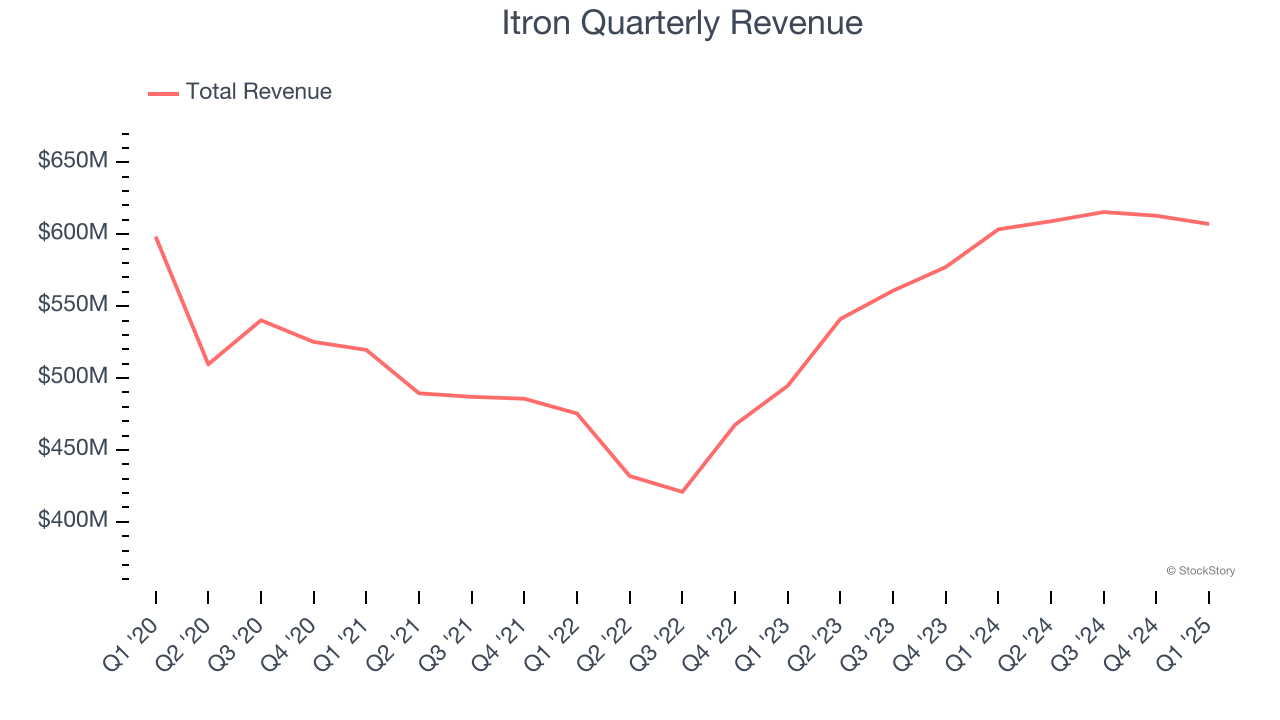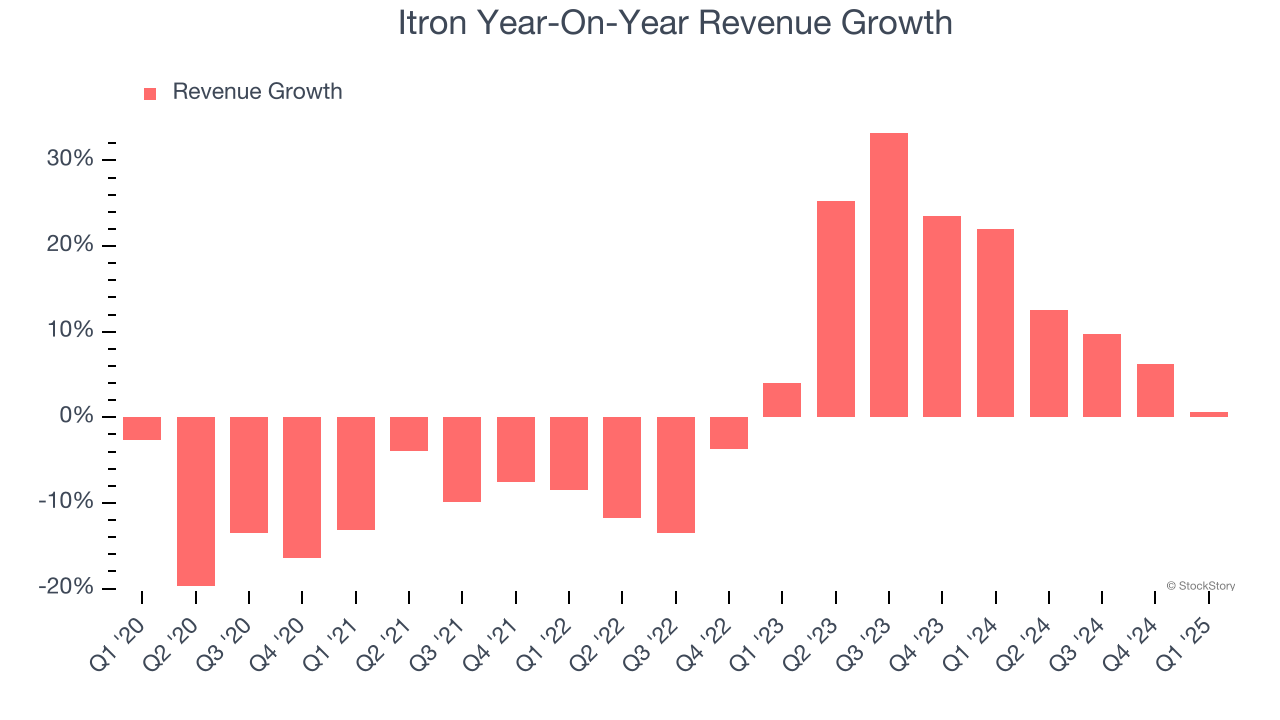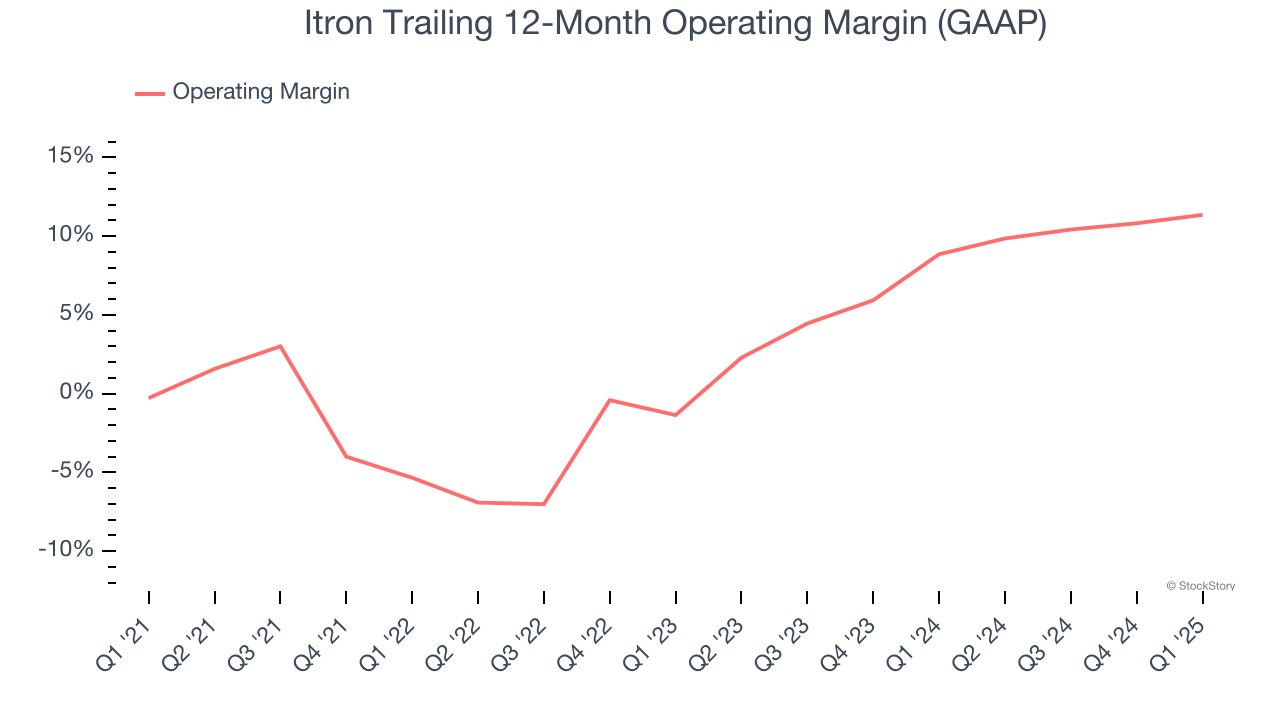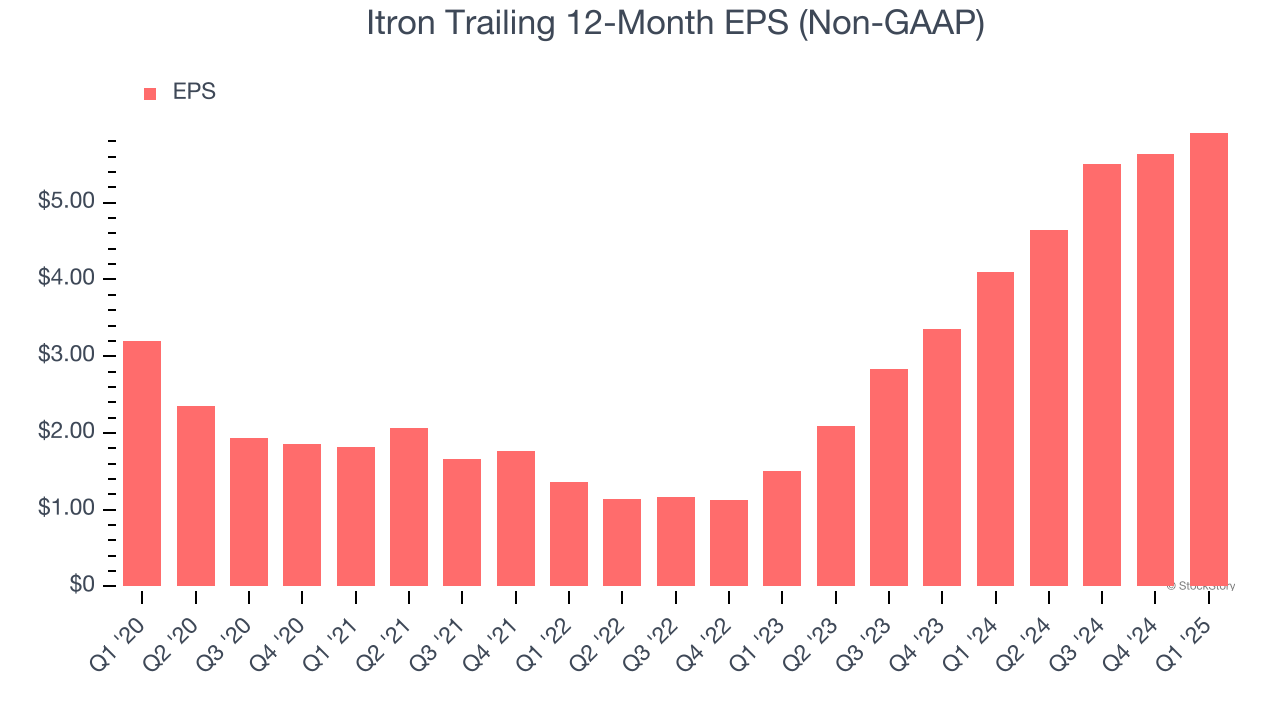
Resource management provider Itron (NASDAQ:ITRI) fell short of the market’s revenue expectations in Q1 CY2025, with sales flat year on year at $607.2 million. On the other hand, next quarter’s outlook exceeded expectations with revenue guided to $610 million at the midpoint, or 0.6% above analysts’ estimates. Its non-GAAP profit of $1.52 per share was 15.4% above analysts’ consensus estimates.
Is now the time to buy Itron? Find out by accessing our full research report, it’s free.
Itron (ITRI) Q1 CY2025 Highlights:
- Revenue: $607.2 million vs analyst estimates of $614.1 million (flat year on year, 1.1% miss)
- Adjusted EPS: $1.52 vs analyst estimates of $1.32 (15.4% beat)
- Adjusted EBITDA: $88 million vs analyst estimates of $83.5 million (14.5% margin, 5.4% beat)
- Revenue Guidance for Q2 CY2025 is $610 million at the midpoint, roughly in line with what analysts were expecting
- Adjusted EPS guidance for Q2 CY2025 is $1.35 at the midpoint, above analyst estimates of $1.29
- Operating Margin: 12.6%, up from 10.4% in the same quarter last year
- Free Cash Flow Margin: 11.1%, up from 5.7% in the same quarter last year
- Market Capitalization: $5.07 billion
"First quarter margin expansion and earnings growth were ahead of expectations due to favorable product mix and continued strong execution," said Tom Deitrich, Itron’s president and CEO.
Company Overview
Founded by a small group of engineers who wanted to build a more efficient way to read utility meters, Itron (NASDAQ:ITRI) offers energy and water management products for the utility industry, municipalities, and industrial customers.
Sales Growth
A company’s long-term performance is an indicator of its overall quality. Any business can have short-term success, but a top-tier one grows for years. Unfortunately, Itron struggled to consistently increase demand as its $2.44 billion of sales for the trailing 12 months was close to its revenue five years ago. This wasn’t a great result, but there are still things to like about Itron.

Long-term growth is the most important, but within industrials, a half-decade historical view may miss new industry trends or demand cycles. Itron’s annualized revenue growth of 16.1% over the last two years is above its five-year trend, suggesting its demand recently accelerated. 
We can better understand the company’s revenue dynamics by analyzing its most important segments, Product and Service, which are 86.2% and 13.8% of revenue. Over the last two years, Itron’s Product revenue (measurement and control equipment) averaged 19.2% year-on-year growth while its Service revenue ( project management, installation, consulting) averaged 3.4% growth.
This quarter, Itron’s $607.2 million of revenue was flat year on year, falling short of Wall Street’s estimates. Company management is currently guiding for flat sales next quarter.
Looking further ahead, sell-side analysts expect revenue to grow 2.3% over the next 12 months, a deceleration versus the last two years. This projection doesn't excite us and suggests its products and services will face some demand challenges.
Software is eating the world and there is virtually no industry left that has been untouched by it. That drives increasing demand for tools helping software developers do their jobs, whether it be monitoring critical cloud infrastructure, integrating audio and video functionality, or ensuring smooth content streaming. Click here to access a free report on our 3 favorite stocks to play this generational megatrend.
Operating Margin
Operating margin is an important measure of profitability as it shows the portion of revenue left after accounting for all core expenses – everything from the cost of goods sold to advertising and wages. It’s also useful for comparing profitability across companies with different levels of debt and tax rates because it excludes interest and taxes.
Itron was profitable over the last five years but held back by its large cost base. Its average operating margin of 3.3% was weak for an industrials business.
On the plus side, Itron’s operating margin rose by 11.6 percentage points over the last five years.

In Q1, Itron generated an operating profit margin of 12.6%, up 2.1 percentage points year on year. The increase was encouraging, and because its operating margin rose more than its gross margin, we can infer it was more efficient with expenses such as marketing, R&D, and administrative overhead.
Earnings Per Share
We track the long-term change in earnings per share (EPS) for the same reason as long-term revenue growth. Compared to revenue, however, EPS highlights whether a company’s growth is profitable.
Itron’s EPS grew at a remarkable 13.1% compounded annual growth rate over the last five years, higher than its flat revenue. This tells us management responded to softer demand by adapting its cost structure.

Diving into the nuances of Itron’s earnings can give us a better understanding of its performance. As we mentioned earlier, Itron’s operating margin expanded by 11.6 percentage points over the last five years. This was the most relevant factor (aside from the revenue impact) behind its higher earnings; taxes and interest expenses can also affect EPS but don’t tell us as much about a company’s fundamentals.
Like with revenue, we analyze EPS over a more recent period because it can provide insight into an emerging theme or development for the business.
For Itron, its two-year annual EPS growth of 98.3% was higher than its five-year trend. We love it when earnings growth accelerates, especially when it accelerates off an already high base.
In Q1, Itron reported EPS at $1.52, up from $1.24 in the same quarter last year. This print easily cleared analysts’ estimates, and shareholders should be content with the results. Over the next 12 months, Wall Street expects Itron’s full-year EPS of $5.91 to shrink by 7.3%.
Key Takeaways from Itron’s Q1 Results
We enjoyed seeing Itron beat analysts’ EPS expectations this quarter. On the other hand, its revenue slightly missed. Looking ahead, next quarter's revenue guidance met expectations. Overall, this print was mixed. The market seemed to be hoping for more, and the stock traded down 1.5% to $109.59 immediately after reporting.
Is Itron an attractive investment opportunity right now? What happened in the latest quarter matters, but not as much as longer-term business quality and valuation, when deciding whether to invest in this stock. We cover that in our actionable full research report which you can read here, it’s free.
